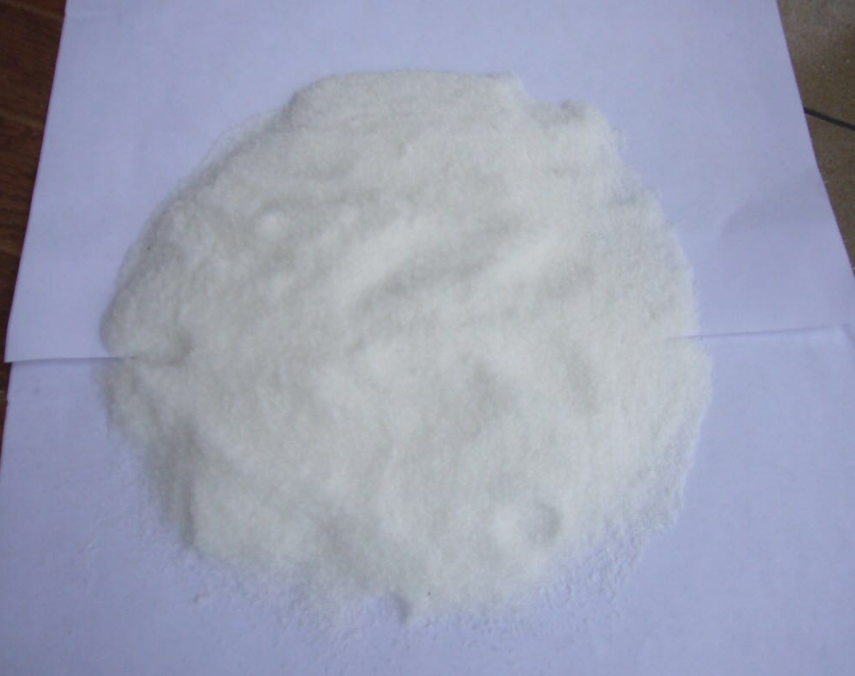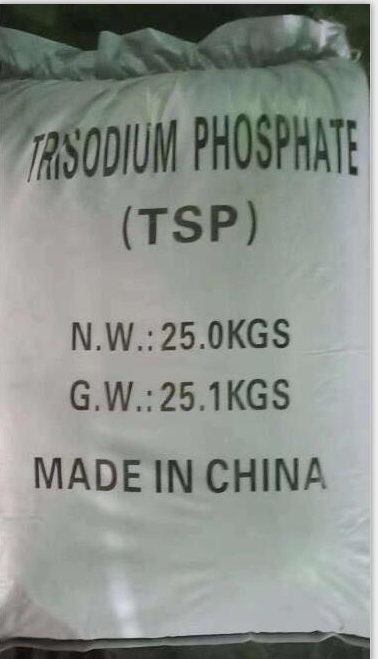Trisodium Phosphate
One of the CAS numbers of trisodium phosphate is 7601-54-9, and the English is Trisodium phosphate. Trisodium phosphate can be regarded as the parent of phosphoric acid H3PO4, with 3 metal sodium atoms Na, all of which are contained in its molecular formula. After 3 hydrogen ions H+, the resulting product. Because phosphoric acid H3PO4 is a tribasic acid, its molecular formula has 3 hydrogen ions that can be replaced by metal elements.
【Physical Properties】
1. Colorless to white crystal or crystalline powder, anhydrous or crystal water containing 1-12 molecules, odorless. The melting point of dodecahydrate is 73.4°C. Easily soluble in water but insoluble in ethanol. The pH of a 1% aqueous solution is 11.5 to 12.1.
Melting point | 1340°C |
Relative density | 1.536g/cm3 |
Dissolved grams per 100 ml of water at different temperatures (°C) |
5g/0°C |
2g/10°C |
1g/20°C |
3g/30°C |
2g/40°C |
9g/60°C |
60g/80°C |
1g/90°C |
77g/100°C |
2. Colorless or white crystals. Soluble in water, its aqueous solution is strongly alkaline; insoluble in ethanol and carbon disulfide.
Melting point | 75 °C |
Density | 1.62 |
Storage conditions | Store at RT |
Solubility H2O | 1.5 M at 20 °C, clear, colorless |
Water solubility | 258 g/L (20°C ) |
Toxicity LD50 | 7400mg/kg(Rat Oral) |
CAS number | 10101-89-0 |
【Chemical properties】
1. It is easy to deliquescence and weathering in dry air to produce sodium dihydrogen phosphate and sodium bicarbonate. It is almost completely decomposed into disodium hydrogen phosphate and sodium hydroxide in water. It becomes decahydrate when heated to 55~65°C, becomes hexahydrate when heated to 60~100°C, and becomes monohydrate when heated above 100°C. It becomes anhydrous when heated above 212°C. The pH of a 1% aqueous solution is 11.5 to 12.1. Groundhog oral LD50>2g/kg, AD10~70mg/kg (FAO/WHO, 1994).
Merck | 14,8662 |
Sensitivity | Hygroscopic |
Related chemical reaction equations:
Na2CO3+H3PO4→Na2HPO4+H2O+CO2↑
Na2HPO4+NaOH→Na3PO4+H2O
2. Relevant chemical reaction equation:
Ca5F(PO4)3+5H2SO4+10H2O→3H3PO4+5CaSO4+2H2O+HF
H3PO4+Na2CO3→Na2HPO4+H2O+CO2↑
Na2HPO4+NaOH→-Na3PO4+H2O
H3PO4+3NaOH→Na3PO4+3H2O
H3PO4+3NaOH→Na3PO4+3H2O
Molecular formula | H24Na3O16P |
Molecular weight | 1.12 |
EINECS number | 231-509-8 |
Merck | 14,8662 |
【Application field】
1. The quality improver can improve the complexed metal ions, pH value and ionic strength of the food, thereby improving the binding power and water holding capacity of the food. China stipulates that it can be used for cheese, with a larger amount of 5g/kg; in Western-style ham, meat, fish, shrimp and crab, the larger amount is 3.0g/kg; in canned food, juice, beverages and dairy products. It is 0.5g/kg.
2. Used as water softener and detergent in chemical, textile, printing and dyeing, papermaking, power generation and other industries, boiler antiscaling agent, water softener in paper dyeing, pH buffering agent in the production of adhesives for wax paper, printing and dyeing Fixing agent, mercerizing enhancer for fabrics, anti-brittle agent for thread production. Used in metallurgical industry for chemical degreasing and decontamination, and as an excellent accelerator in photographic developing solutions. Tooth cleaner and bottle detergent. Coagulant for rubber latex. Juice purifier. Phosphate plays a role in quality improvement in food processing. For example, in meat products, it can maintain the water retention of the meat and increase the binding force, so as to reduce the loss of nutrients in the meat and preserve the tenderness of the meat. It is also used as an emulsifier, nutritional supplement, and quality improver in food processing. It is the raw material for preparing alkaline water for noodles, and is also used for sugar refining and α-starch production. It is also used as a detergent for food bottles and cans.
3. Solid trisodium phosphate (TSP) is a strong alkali and weak acid salt, with strong alkalinity, high solubility, stable chemical properties, and can be stored for a long time. Add it to the spray water of the shell spray system (EAS) TSP replaces NaOH, can adjust the pH value of the spray liquid, effectively remove the iodine gas released from the leaked cooling water into the shell, avoid the damage of strong alkali to the staff, and facilitate the cleaning after the accident.
【Precautions】
Terms
1. After accidental contact with eyes, please rinse immediately with plenty of water and seek medical advice.
2. Wear appropriate protective clothing, gloves and goggles or masks.
3. If an accident occurs or you feel unwell, seek medical attention immediately (show the label if possible).
Risk term
Cause burns. Entry route: inhalation, ingestion
Health hazards: This product severely damages mucous membranes, upper respiratory tract, eyes and ~. After inhalation, it can cause death due to spasm, inflammation and edema of the larynx and bronchi, chemical pneumonia or pulmonary edema. Contact causes burning sensation, coughing, wheezing, laryngitis, shortness of breath, nausea and vomiting.
first-aid
Contact: Take off contaminated clothing, immediately rinse with plenty of running water for at least 15 minutes. Seek medical attention.
Eye contact: immediately open the upper and lower eyelids and rinse with running water or saline for at least 15 minutes. Seek medical attention.
Inhalation: quickly leave the scene to a place with fresh air. Keep the airway open. Give oxygen when breathing is difficult. Once breathing stops, begin CPR immediately. Seek medical attention.
Ingestion: If you take it by mistake, rinse your mouth immediately and drink milk or egg white. Seek medical attention.
Fire-fighting measures
Fire extinguishing method and extinguishing agent: non-combustible. Extinguishing media available around the fire scene.
Wear a mask and gloves. Mix it with sand, dry lime or soda ash, and then bury it in a dedicated waste site. If there is a large amount of leakage, collect and recycle or discard after harmless treatment.
Operational disposal
Personal protection: higher allowable concentration:
Engineering control: airtight operation, pay attention to ventilation.
Respiratory protection: workers should wear dust masks. Wear a gas mask when necessary.
Eye protection: Wear protective glasses when necessary.
Body protection: wear work clothes.
Hand protection: Wear protective gloves.
Other protection: After work, take a shower and change clothes. Maintain good hygiene.
Transport matters
Store in a cool, ventilated warehouse. Keep away from fire and heat sources. The packaging must be sealed and not in contact with air. Moisture-proof and sun-proof. Should be stored separately from acids, etc. When handling, load and unload with care to prevent damage to packaging and containers.


